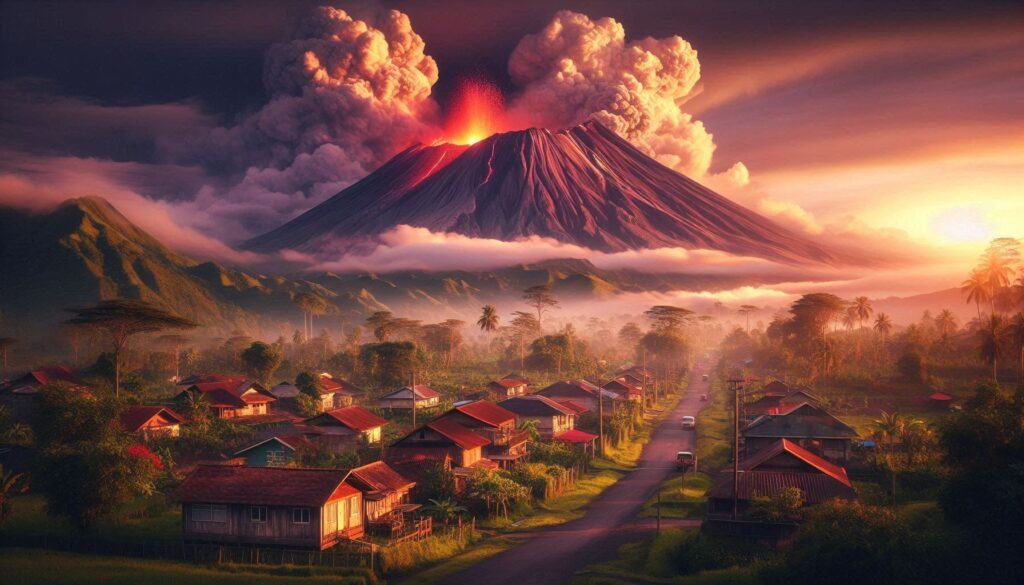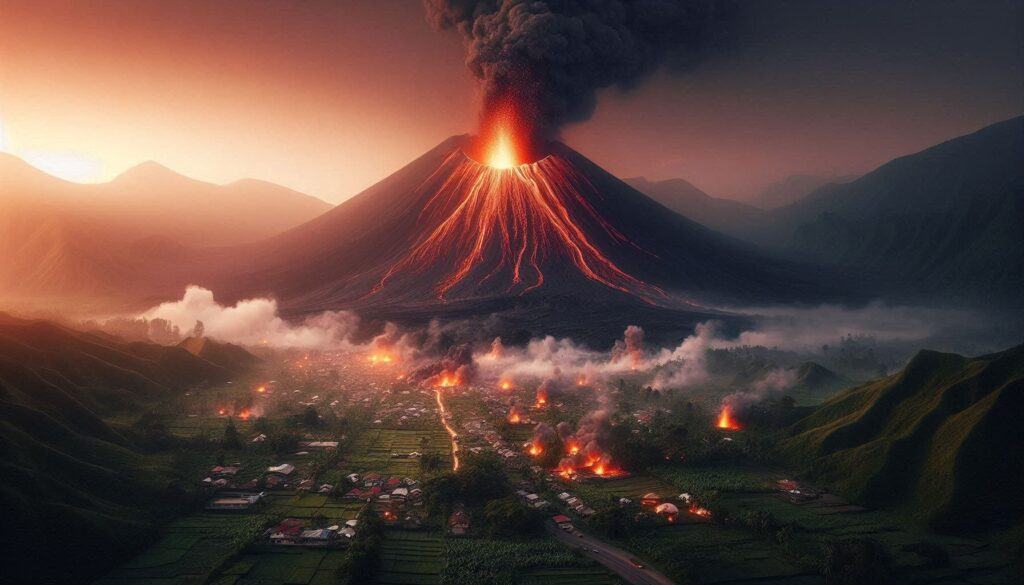 Volcanic eruptions, they’re more than just nature’s fireworks. These powerful events arise from complex geological movements beneath the Earth’s surface. When magma, which is molten rock underground, builds up enough pressure, it forces its way through cracks, causing an eruption. Sometimes it’s slow and steady, like lava flows, but other times it can be a violent explosion, spewing ash and debris miles into the sky.
Volcanic eruptions, they’re more than just nature’s fireworks. These powerful events arise from complex geological movements beneath the Earth’s surface. When magma, which is molten rock underground, builds up enough pressure, it forces its way through cracks, causing an eruption. Sometimes it’s slow and steady, like lava flows, but other times it can be a violent explosion, spewing ash and debris miles into the sky.
Knowing the ins and outs of volcanic activity isn’t just for scientists. For anyone living near a volcano, or even those who may just be passing through such regions, understanding these natural processes is essential for safety. Volcanic regions can be dangerous, but with the right knowledge, the risks can be managed.
First, here’s 5 facts about volcanic eruptions: About 20 volcanoes are erupting at any given time around the world. Some eruptions can affect global weather patterns, like the 1815 eruption of Mount Tambora, which led to the ‘Year Without a Summer’. The Ring of Fire, an area in the Pacific Ocean, is home to most of the world’s active and dormant volcanoes. People living near active volcanoes often rely on them for fertile soil but face significant risks. Finally, not all volcanoes are found at tectonic plate boundaries; some, like those in Hawaii, are caused by ‘hot spots’ where lava breaks through the crust.
Understanding volcanic activity is about more than avoiding danger. It means being proactive in planning and ensuring that one’s home and family are ready to respond if the earth decides to stir. Knowledge empowers action, and that’s the first step in dealing effectively with the potential hazards of living near a volcano.
How do People Prepare for Volcanic Eruptions:
Essential Steps and Strategies
Living near a volcano brings its own set of challenges and responsibilities. Preparation is not just about packing an emergency bag; it’s about being ready for the reality of what an eruption could bring. A well-thought-out plan can make all the difference in staying safe and keeping loved ones secure.
The first thing to consider is educating yourself about potential risks. Learn whether your area is in the path of lava flows or likely to experience ashfall. Local authorities and geological surveys often provide risk maps. Once you know the hazards, you can better prep for what’s ahead.
An essential step is crafting an emergency plan. This should include a list of contact numbers and a designated meeting spot in case family members get separated. Keep this information handy and make sure everyone in your household knows it by heart. Walkie Talkies would be good to distribute to loved ones in advance.
Stocking up on essentials is crucial. A natural disaster preparedness kit should have at least three days’ worth of food and water (probably more), a flashlight, batteries, lighters, first aid supplies, and any personal necessities or medications. Don’t forget masks and goggles to protect against ash inhalation.
Another key element is understanding public alert systems and evacuation routes. Familiarize yourself with the local emergency services protocols and any siren systems. Know how and when to evacuate, and keep your vehicle fueled up and ready to go at a moment’s notice.
Don’t underestimate regular drills. Practicing how to leave your home quickly and safely can help allay fears and reduce confusion if an eruption occurs. It might seem tedious, but having these skills can prove invaluable if the time comes. It’s best if you keep an emergency preparedness food supply that’s good for days or more. Brainstorm all your normal necessities of life and additional outdoor survival needs for a worst case scenario. This may include portable water filters as well.
Most importantly, stay informed. Keep track of updates from reliable sources such as local news outlets or official government websites. Being in the know means you’re less likely to panic and more likely to make smart, quick decisions when necessary.
Tips to Survive a Volcanic Eruption: And Recovery Strategies
 In the event of a volcanic eruption, immediate action is vital to ensure your safety and the safety of those around you. If evacuation orders are issued, follow them promptly and calmly. Evacuating early can prevent getting trapped by traffic or hazardous conditions.
In the event of a volcanic eruption, immediate action is vital to ensure your safety and the safety of those around you. If evacuation orders are issued, follow them promptly and calmly. Evacuating early can prevent getting trapped by traffic or hazardous conditions.
If you’re caught in an ashfall situation, shield yourself with masks and goggles to avoid respiratory problems and eye irritation. Stay indoors as much as possible, sealing windows and doors to minimize ash infiltration. If that’s not possible, cover your nose, mouth, and eyes as best as you can while seeking nearby shelter.
Surviving the aftermath involves understanding and navigating ongoing threats such as ash deposits, weakened roadways, and potential landslides. Maintaining a level of preparedness and caution is essential even after the initial eruption phase. Look out for new updates from authorities about any further risks.
Emotional recovery is just as important as physical safety. For those who find their homes damaged or destroyed, it can be overwhelming. Seek emotional support from friends, family, mental health professionals, or the Bible to process the stress and grief that comes with displacement. Many communities offer resources to help with recovery tasks and provide financial or housing assistance.
Continuing with everyday activities can help regain a sense of normalcy. Rebuilding or moving on may take time, but setting small, achievable goals can foster resilience. Volcanic eruptions are disruptive, yet they also offer lessons in adaptability and community strength. Embrace support systems, engage in collective recovery efforts, and tap into community-organized resource networks to make the process smoother.
________________________________________________________________________________________
* I may earn a commission if you click on certain links on this website.
